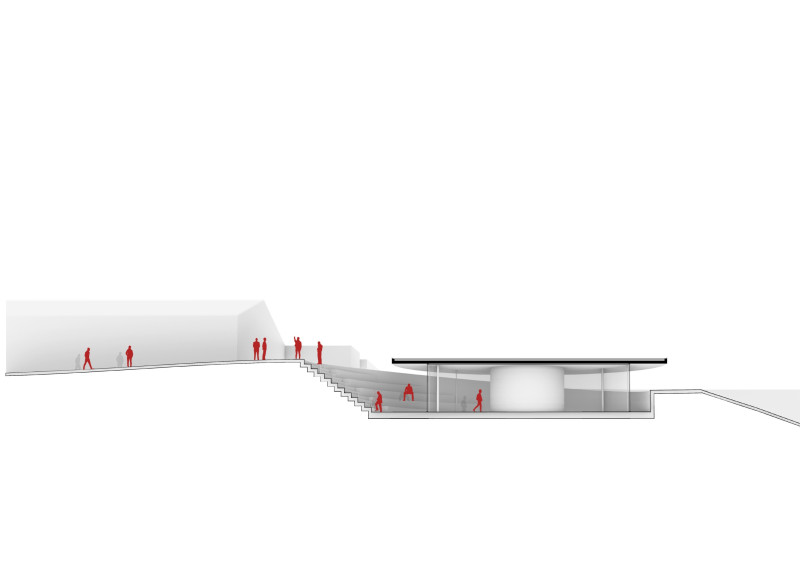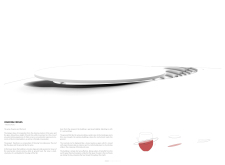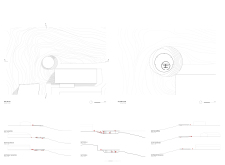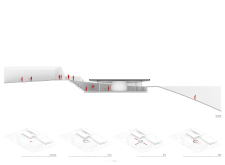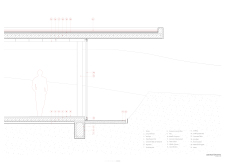5 key facts about this project
The Dancing Circles project is located at Monte D'Oiro, surrounded by a beautiful vineyard landscape. Designed as a wine tasting venue, the building allows visitors to engage with the sensory experience of wine while connecting with nature. The design concept is based on the relationship between wine and glass, reflected in a form that suggests movement and harmony within its environment.
Circular Geometry
The building uses circular shapes to create a series of “dancing” forms. In this design, the roof represents the glass and the ground represents the wine. This circular form serves both function and aesthetics, encouraging a unique spatial experience. The shape provides sweeping views of the landscape, allowing the structure to blend into the picturesque surroundings of the vineyard.
Strategic Embedding
The building is set into the hillside, which helps reduce its visual impact and enhances views of the area. The ground has a gentle slope, mimicking the movement of wine in a glass. This design choice creates broader perspectives of the landscape while minimizing sight lines to nearby buildings. Consequently, visitors encounter a peaceful environment, deepening their appreciation for the tranquil winery setting.
Materiality and Performance
Concrete and glass are the key materials used in this design. Concrete adds structural stability and durability, while glass allows natural light to fill the interior, creating a welcoming atmosphere. The sunken design takes advantage of the earth's thermal properties to improve energy efficiency. Additionally, a thin layer of water on the roof helps regulate temperature by absorbing heat during the day and releasing it at night, contributing to overall comfort and reducing energy use.
Design Details
An interesting aspect of the project is its displaced concrete roof, which echoes the look of natural stone. This detail creates an inviting entrance and provides steps leading to a gathering area, promoting social interaction. This thoughtful integration encourages people to enjoy the surrounding views and enhances the connection between the interior and the outside environment, reflecting the design's themes of movement and unity.


